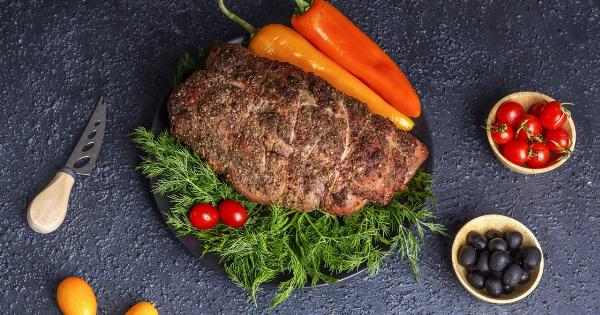Olives are a common ingredient in many diets around the world, with some people consuming them in large quantities. While there are many different types of olives, red olives are becoming more popular.
They are typically found in the Mediterranean region, where they are often served in salads, on pizzas or eaten as a snack. However, there are health risks to consider when consuming red olives. In this article, we will discuss some of these risks.
What are Red Olives?
Red olives are a variety of olives that are typically harvested when they are fully ripe, giving them a dark, purplish-red color. They are smaller in size than green olives and have a higher oil content.
Red olives are often served with meals as a snack or used as an ingredient in recipes, much like black or green olives. However, they are known for their sweeter and more robust flavor compared to other varieties.
Health Risks of Consuming Red Olives
While red olives do offer a wide range of health benefits, there are several risks associated with consuming them in large quantities, including:.
1. High Sodium Content
One of the most significant health risks associated with consuming red olives is their high sodium content. Many individuals consume red olives in canned or jarred forms, which are often preserved through pickling.
This method of preservation requires the use of salt, which causes red olives to have a very high sodium content. Consuming large amounts of salt can lead to high blood pressure and an increased risk of heart disease.
2. Digestive Issues
Consuming red olives can cause digestive issues, particularly if you eat them in large quantities. These issues include bloating, gas, stomach cramps, and diarrhea.
Red olives are high in FODMAPs, which are short-chain carbohydrates that are difficult for the body to digest. Individuals with irritable bowel syndrome or other digestive issues may want to limit their consumption of red olives.
3. High Caloric Content
Red olives are also high in calories, which can lead to weight gain if consumed in large quantities. A single cup of red olives contains approximately 200 calories, which is a significant amount.
Many individuals consume red olives as a snack, which can add up quickly and cause weight gain over time.
4. Risk of Allergic Reactions
Some individuals may be allergic to olives, including red olives. Allergic reactions can be mild or severe, depending on the individual’s sensitivity to the food.
Symptoms of an allergic reaction to red olives include hives, itching, swelling of the face and throat, and difficulty breathing. If you experience any of these symptoms after consuming red olives, seek emergency medical attention immediately.
5. Risk of Contamination
Red olives that are not properly processed or stored can be at risk of contamination. Contaminated olives can lead to food poisoning and other illnesses.
It is important to purchase red olives from reputable retailers and to make sure they are properly stored and handled to reduce the risk of contamination.
Conclusion
While red olives are a tasty and healthy addition to many meals, they should be consumed in moderation.
Consuming large quantities of red olives can lead to health risks such as high blood pressure, digestive issues, weight gain, allergic reactions, and contamination. It is important to be mindful of your red olive consumption and make sure that you purchase and store them properly to reduce the risk of illness.






























